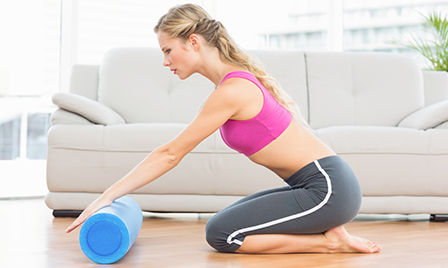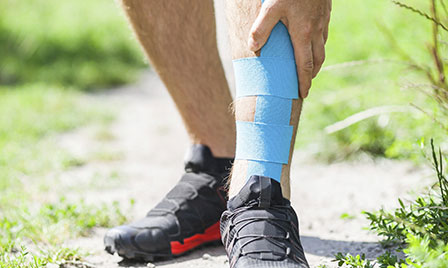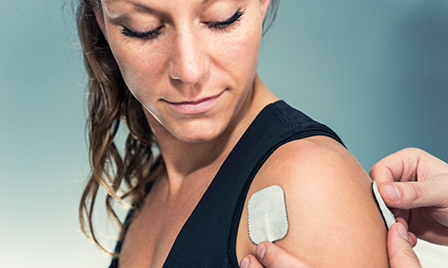
MOVE
Beyond the smoothie: post-workout recovery
Posted August 29, 2015
Your typical post-workout recovery routine might include stretching and a smoothie with the right dose of protein and carbohydrates. As a physical therapist and athletic trainer, I can tell you there will come a time when this simple routine will not be enough to calm the chronic aches, pains and injuries you experience from working your body.
Spending time on rest and recovery can benefit your performance even more than additional training time. You can save yourself missed workouts, cancelled races, pain and frustration with a few simple home recovery tools and gear.

Cold therapy (Cryotherapy)
Cold therapy can be used to varying degrees, everything from taking cold showers (beneficial in absence of injury), rubbing ice on your muscles, to whole-body submersion in an ice bath. When you apply extreme cold to your muscles, your blood vessels tighten. This helps drain the lactic acid out of your tired muscles. When you remove the ice, your muscle tissue warms back up, causing a return of oxygenated blood. This helps your muscles recover. Cold therapy is beneficial for anyone who is active and needs to control pain and/or swelling. In addition to muscle recovery, cold therapy can help enhance your immune system, increase cell longevity and build your tolerance for training outside in cold, Minnesota winter conditions.

Compressive clothing
These snug-fitting socks, shorts, pants or shirts squeeze muscles and thus increase blood circulation and oxygen delivery for improved performance and less tissue damage when worn during exercise. The clothes can also reduce muscle fatigue and soreness when worn after exercise by increasing blood flow to muscles, which helps restore glycogen levels and clear metabolic waste associated with exercise. The result: quicker recovery. The evidence to support these benefits is unclear. But many athletes who depend on quick recovery in order to train the next day, like distance runners and cyclists, swear by compressive clothing.

Foam roller/massage stick
Stretching alone is not always enough to release muscles tightness. A foam roller or massage stick can help apply pressure to specific points, or knots, on your body. Both tools aid in the recovery of muscles and assist in returning them to normal movement. Massage sticks work better on calves, forearms, neck and back; while foam rollers work better on hips and quads. This form of self-massage should be done 10-20 minutes prior to exercising and again immediately after exercising, but prior to stretching. Anyone who experiences muscle tightness can benefit from this recovery tool—it may even decrease your need for regular massage appointments.

Kinesio tape
Kinesio tape is a rehabilitative taping technique used to promote circulation and healing to injured muscles and joints. The breathable, elastic fibers are woven to slightly lift the epidermis, allowing for more blood flow and decreased pressure on pain sensors located underneath. Without restricting your range of motion, Kinesio tape also provides support to sore joints and muscles. The tape is generally used as an additional treatment when rehabilitating an injury. Made popular by Kerri Walsh at the 2008 Olympics, Kinesio tape is now used widely at all levels of athletic competition and safe for all ages. Taping yourself is not an easy task. You should see a trained professional to learn correct application, which can last up to five days.

Electrostimulation
This is where electrodes are placed on your skin and the muscles lightly twitch from the current. This electrical stimulation to your muscles can be used to increase strength and speed healing when rehabilitating an injury. It works by increasing heat and blood flow to troubled areas and then clearing metabolic waste associated with exercise. Electrostimulation is often combined with pressure and ice to control pain. Electrostimulation can be done in the comfort of your home and is most beneficial to those performing high-volume and high-intensity training.
Recovery tools are not a free pass to ignore the trifecta of recovery: sleep, hydration and proper nutrition. They are complements meant to improve performance and overall quality of life. After all, a healthy and happy person not only performs better, but can give time and energy to others also.
-
Courage Kenny Sports and Physical Therapy
Find a provider -
Find a sports medicine provider
Search now
MORE ARTICLES LIKE THIS
Get fun, inspiring, provider-reviewed articles sent to your inbox.
Sign up for our email newsletter




